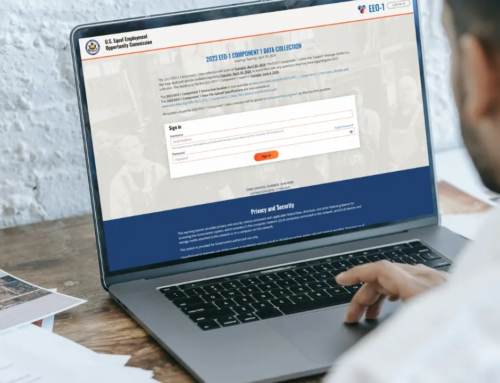In 2020, the COVID-19 pandemic shook the U.S. economy. The number of Americans filing claims for unemployment benefits dramatically increased, leading to a nationwide spike in fraudulent unemployment claims activity, including using stolen identities to apply for unemployment benefits.
Why Is This Happening?
Two results of the pandemic made the unemployment system a likely target for fraudsters. First, the sheer volume of claims meant the system was overwhelmed with less capacity to prevent improper payments. Second, multiple legislative actions provided an unprecedented $630 billion in additional funds for the unemployment system, making it a high-profile target for criminals.
Recent reporting from the Office of Inspector General, a federal agency with primary oversight of the Department of Labor (DOL), estimated a $63 billion loss in funds against unemployment insurance programs, “with a significant portion attributable to fraud.”
What Employers Are Seeing Now
Even 12 months into the pandemic, fraudsters continue to take advantage of an overwhelmed system, using stolen identities to apply for unemployment benefits. As a result, over the past few months, employers have seen an increase in unemployment notices purportedly from former employees who left the organization voluntarily and even current employees.
How to Protect Employees
- Closely monitor and promptly reply to all unemployment insurance claims.
- If you receive an unemployment claim from your state for a current employee or an employee who left voluntarily, reply quickly to the state agency with the information you have.
- Depending on the state, the state unemployment benefits agency may require a fraud report.
- It’s also important to reach out to the employee or former employee and let them know what you’ve learned. They should check their credit reports for unknown activity and report the theft to the FTC.
- If the impacted employee has identity theft protection and recovery insurance through your organization, send them the information they need to file a claim.
- Notify your IT team to ensure there has not been a security breach of your employee data. It is likely the criminals got the employee data via a breach of a consumer company’s data, but it’s a good measure to confirm.
- Ensure new-hire reporting is accurate, as state agencies use new-hire data to compare with unemployment claims.
Combatting Unemployment Insurance Fraud
On September 2, 2020, the DOL announced $100 million in funding to support states’ effort to combat unemployment insurance (UI) fraud, including the recovery of incorrect payments in the UI program and programs created under the Coronavirus Aid, Relief, and Economic Security (CARES) Act.
Additional Resources
- Find out where to report unemployment claim fraud in your state via the U.S. Department of Labor Report Unemployment Insurance Fraud page.
- Federal Trade Commission, “Has someone misused your personal information to claim unemployment insurance benefits?“
- SHRM, “Unemployment Fraud Is on the Rise”




